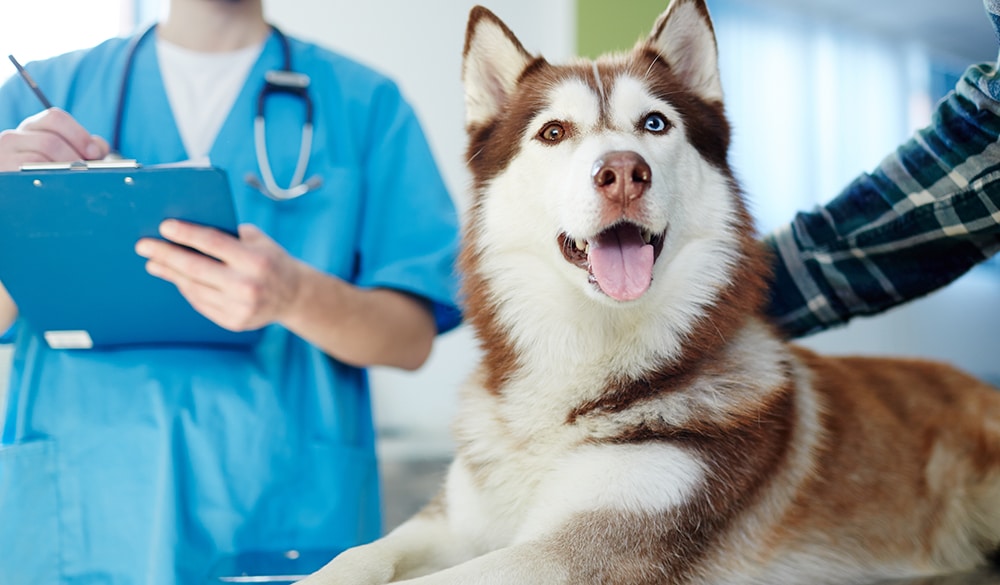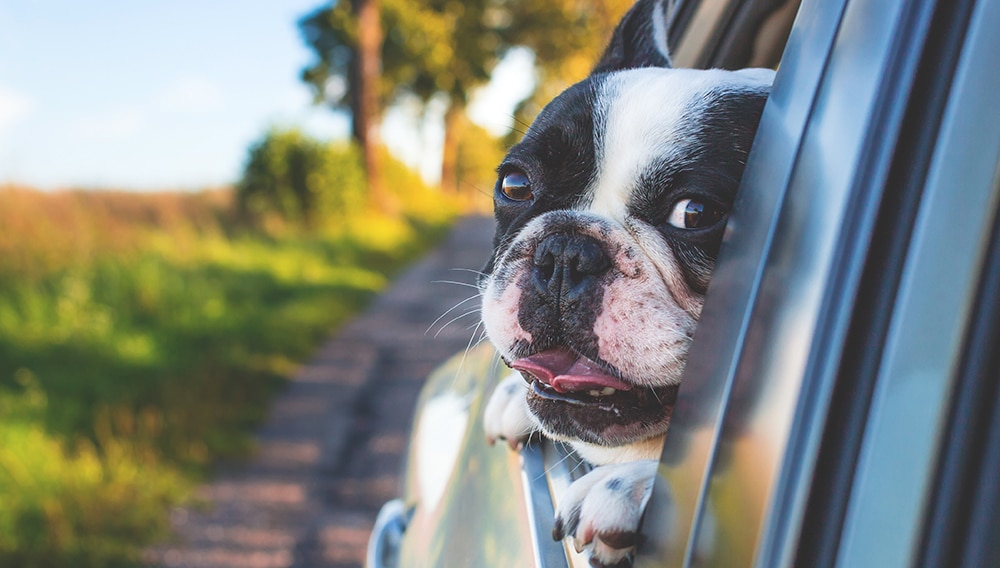The summer months mean vacation season with people traveling by car or plane to fun destination spots. This may include traveling with your furry friend. To set up the adventure for success, there are a few important things to do before and during the journey.
This blog explains why it is important for your dog to visit the vet before pet travel, lists what to bring when traveling with your dog in a car and tackles the problems that may occur. Problems such as a dog’s car anxiety, dog boredom, when to make stops, and what to take into consideration when deciding to fly with your dog.
Vet Visit Before Pet Travel
Have your pet’s health checked out and their vaccinations updated before you travel with them. A vet visit lets you know if your dog is healthy enough to make the journey. Many airlines and some pet hotels require the owner to provide a certification of health for their dog. Update the new vaccination doses and other important information on the dog’s microchip and id tags.

What To Bring When Traveling with Your Dog in a Car
There are lots of ways a dog can make a car messy. A canine can have a bathroom accident, spill a beverage or track in dirt. Bring towels, cleaning spray and paper towels to make those messes easy clean ups.
Dog car safety requires your dog to not roam around the vehicle to prevent driver distraction or the canine from getting into something they should not. Purchase a dog safety car harness, crate or an elevated box to keep your pet in one safe place.
Pack your dog’s regular food. Do not purchase dog food that your canine has never before eaten. New food often causes diarrhea or vomiting. Stick to their regular eating schedule to prevent hunger at odd times.
A portable water bowl is perfect for car travel. To prevent dehydration, plan on offering water every 2 hours. Use bottled water if the tap water available is questionable.

Stops for Dog’s Potty Breaks and Exercise
Dogs typically go to the bathroom three to five times a day and need about 30 minutes to two hours of exercise a day. These estimations depend on the age and breed of dog. A good rule of thumb is to stop every two to four hours for your dog to go potty and stretch their legs. Take the dog for a quick walk or play fetch with them to get their energy out. Don’t plan on traveling for more than seven hours a day.
Know where the best rest stops are before you hit the road. Love’s Travel Stop has over 90 fenced-in dog parks throughout the country. Pilot Flying J truck stops have 650 pet friendly travel centers across the country. They provide a safe place to exercise, to rest and offer a variety of pet friendly products and services.

How to Help Your Dog’s Car Anxiety
Many dogs get motion sickness or have anxiety when in a moving vehicle. Ideally a dog would be exposed to car travel at a young age, but not all dogs are given that opportunity.
The best way to adjust a dog with car anxiety to a vehicle is through desensitization. Start with short drives followed by praises and a reward. The goal is to have the dog associate the car with a safe and positive place. Use positive reinforcement and always go at your dog’s own pace.
Ways to create a safe environment are to put favorite blankets and toys in the car to provide familiar smells, play calming classical music to give a soothing atmosphere and/or spritz pheromone calming sprays on the seats. Remember to always exercise them before every car ride to release their energy.
Sometimes a dog’s anxiety requires a little more help. CBD oil and treats are proven to help reduce a canine’s stress. Follow instructions on the brand package for the time frames of when to give a dog CBD oil or treats before and during a car ride. Talk to your vet about any recommended over the counter stress reducing medications. Read here to learn more in depth about how to help your dog with their anxiety.
Prevent Your Dog from Being Bored
Staring out the window is entertaining for only so long. If the road trip is a long one, then bring interactive toys to stimulate your dog’s mental energy. Entertaining treat filled puzzle toys, treat mazes and KONGs help to keep your pooch engaged. Purchase a variety and fill the interactive toys with your dog’s favorite treats.

Flying with Your Dog
Flying with your dog is quite different from driving. A canine needs to be at least eight weeks old and weaned to be allowed on an airplane. Most airlines allow dogs to be in the cabin if they are 20 pounds or lighter. They must be in a carrier at all times. For larger dogs they are put in the plane’s cargo area. Airlines require these dogs to be in well-ventilated, hard-sided kennels.
To consider whether or not you should fly with your dog pay attention to the length of the flight, your dog’s limitations and the travel weather. All of these, especially for dogs in the plane’s cargo area, can determine a canine’s condition when you reach your destination. Read here to learn more about flying with your dog.

Dog Travel Companions
Dogs can make fantastic travel companions and many love to go on adventures. Make the trip comfortable and safe for your beloved pet by bringing the right items, sticking to car safety, timing potty breaks and exercising, helping with your dog’s car anxiety, preventing boredom and making a calculated decision on whether to fly with your pet or not.



